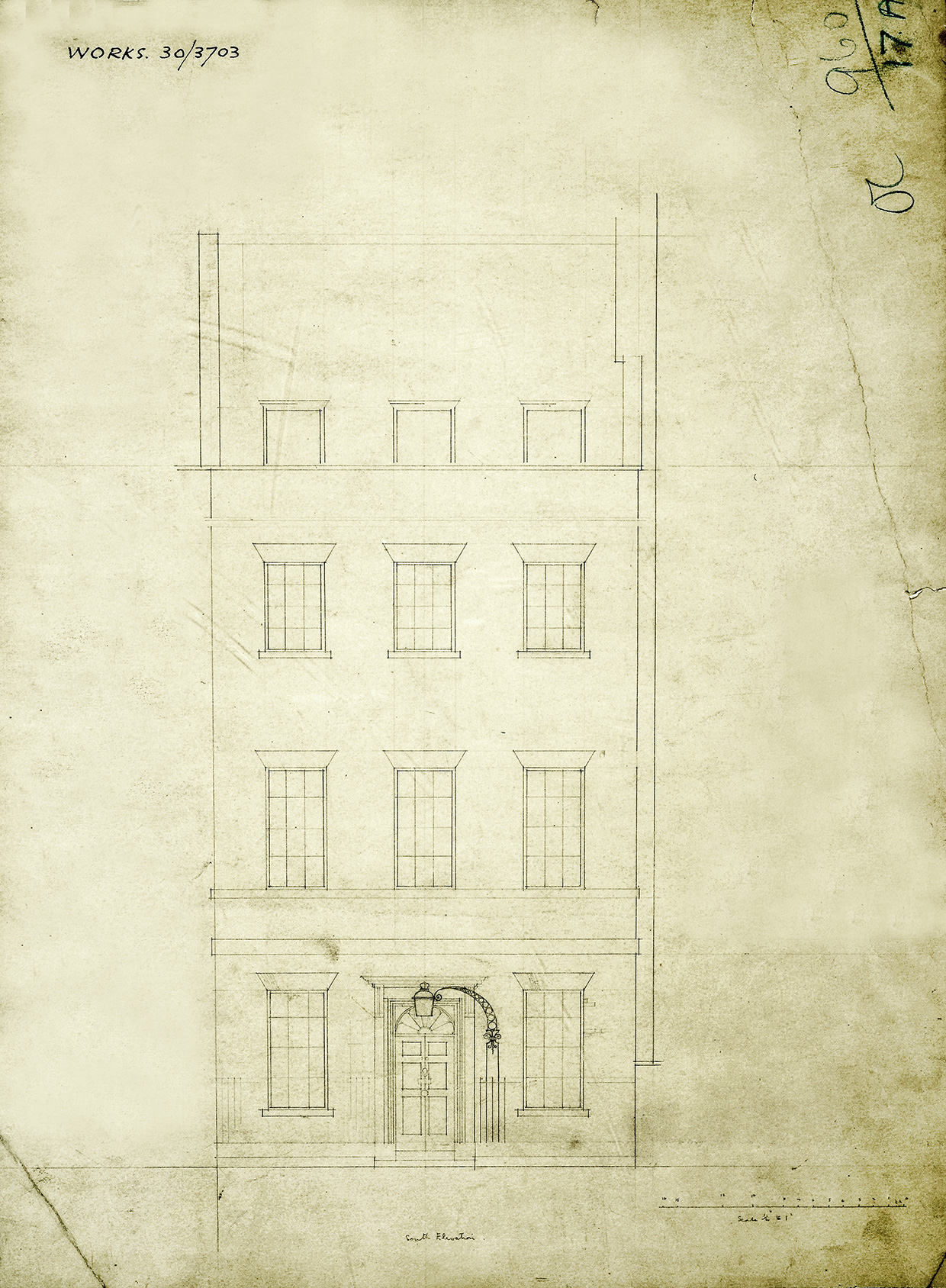
10 Downing Street is one of the most famous addresses in the world. It is the official residence of the Prime Minster of Great Britain and Northern Ireland. The house is part of a terrace of houses built in the 1680s by Sir George Downing who employed the architect Sir Christopher Wren to design the houses and these were sold to wealthy Londoners. In 1735 King George II gave 10 Downing Street to his Prime Minister Sir Robert Walpole and it remains the home of the serving Prime Minister to this day.
10 Downing Street is a good example of Georgian architecture (named after the four King George’s who reigned from 1714-1830). Georgian buildings were usually square or rectangular and symmetrical. They were usually made of brick. Decorations might include a semi-circular fan light above the front door and pillars and columns to each side of the door. The roof was often hidden behind a parapet wall. Look carefully at the document showing 10 Downing Street.
Fascinating Fact: 10 Downing Street was built out of yellow bricks. Due to London’s pollution problems, the house got darker and darker. Today, the bricks are painted black because no one would recognise the building if it was yellow.
- The building was designed mainly out of rectangles. Can you count all the rectangles in the building? Why did Christopher Wren use so many rectangles in his design?
- Can you find the line of symmetry in the design of the building?
- Imagine you are standing looking up at the building. What words might come into your head? How might you feel? Is the building inviting you to go inside and explore or is it asking you to keep your distance?
- Sketch 10 Downing Street as it appears on the document. Imagine you have just moved in. What changes would you make to the building to make it feel like home? What decoration would you add, what colour paint would you use? Would you add trees and flowers, a big wall, add more windows?
